
This online workship is intended for academic librarians exploring the potential of sequential art in teaching, learning, and libraries. For a more general workshop on this topic, go to Sequential Art and Technology Enhanced Learning..
Cartoons. A cartoon is a full-size drawing. Balloons may be used to depict speech and a caption is sometimes found across the bottom of the visual. These works of art are often humorous. Editoral cartoons are funny but often have a serious tone using irony or satire.
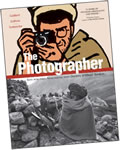 Comics. Comics, comic strips, and comic books contain a series of cartoon illustrations that tell a story. Presented in a sequence, comics may be a few panels or many pages. Read the original Spider-Man comic at Marvel.
Comics. Comics, comic strips, and comic books contain a series of cartoon illustrations that tell a story. Presented in a sequence, comics may be a few panels or many pages. Read the original Spider-Man comic at Marvel.
Graphic Novels. Graphic novels are a more lengthy version of a comic book. They usually have a more complex storyline than a traditional comic. Although many are for mature audiences, an increasing number are being produced for young people.
Graphic Memoir, Documentary, and Nonfiction. From hand drawings to photographs there are many ways visuals are used in graphic materials. Read The Photographer: Into War-Torn Afghanistan with Doctors Without Borders from First Second by Didier Lefevre & Frederic Lemercier & Emmanuuel Guibert (Doctors without Borders).
Many books are also available as graphic novels. For instance, Artemis Fowl by Eoin Colfer is available as both a traditional novel and a graphic novel.
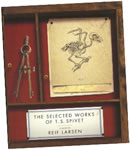 Manga. Manga is Japanese for comic or whimsical pictures. The format is often associated with a particular style of drawing, but can be applied to a wide range of Japanese comics. Manga are typically read from top to bottom and right to left.
Manga. Manga is Japanese for comic or whimsical pictures. The format is often associated with a particular style of drawing, but can be applied to a wide range of Japanese comics. Manga are typically read from top to bottom and right to left.
Illustrated Novels. Incorporates visuals into fiction books such as The Invention of Hugo Cabret by Brian Selznick and The Selected Works of T.S. Spivet by Reif Larson.
Information Graphics. Presents news and information visually such as Financial Meltdown Example. Check out the work of Tonia Cowan.
Sequential Art. The category of illustration that includes cartoons, comics, graphic novels, and manga is called sequential art.
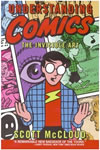 Read Understanding Comics and Making Comics by Scott McCloud to learn more about the language of sequential art.
Read Understanding Comics and Making Comics by Scott McCloud to learn more about the language of sequential art.
Other books to read include:
Will Eisner. Comics and Sequential Art, Poorhouse Press, 1985.
Will Eisner. Graphic Storytelling, Poorhouse Press, 1995.
Scott McCloud. Understanding Comics - the Invisible Art, HarperCollins, 1994.
Scott McCloud. Reinventing Comics, HarperCollins, 2000.
Scott McCloud. Making Comics, HarperCollins, 2006.
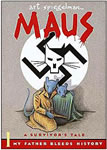 Having grown up reading comic books like The Archies and magazines such as Mad, I've wondered about the recent surge in popularity of this format. Why now?
Having grown up reading comic books like The Archies and magazines such as Mad, I've wondered about the recent surge in popularity of this format. Why now?
Multimedia Tie-ins. From Spiderman to X-Men, traditional comics are being tied to video games and hit movies.
Major Awards. Graphic novels have begun to win major awards for both adults and young people. Maus: A Survivor's Tale Volume 1: My Father Bleeds History by Art Spiegelman got the ball rolling in terms of awards for adult publishing. Read the Teacher's Guide. Then, American Born Chinese by Gene Luen Yang won literary awards for young adult literature such as the 2007 Michael L. Printz Award.
Japanese Influence. Manga is a hit with young people. American children are wild about Japanese cartoons, comics, and graphic novels. Many companies such as Toyopop have a Kids Manga section.
Notable Authors. With the introduction of Stephen King's Dark Towerin a graphic novel format, mainstream authors are beginning to see the role of graphic novels in the publishing industry.
Timely Topics. Graphic novels such as Persepolis and Pride of Bagdad have brought world topics to the forefront. The 9/11 Report: A Graphic Adaptation provides an accessible alternative to the Commission report. Also check out In the Shadow of No Towers by Art Spiegelman.
Comic Life. Easy-to-use tools such as Comic Life have made it easy for anyone to create their own, high-quality comic. Check out the Conifers example.
From Beowulf illustrated by Gareth Hinds to Treasure Island, the possibilities for the classroom are endless. Why study graphic novels? There are many ways to use comics and graphic novels in teaching and learning. Here are some ideas:
Some people have observed that graphic novels bring the classic works of literature to a new audience. Others say that these works are fakes and a poor alternative to the original versions. Read Beowolf or Treasure Island by Robert Louis Stevenson (retold by Wim Coleman and Pat Perrin) from Stone Arch Books in the graphic novel format (very easy reading). Or read the popular Graphic Classics series. Compare the visual version to the text version. How do they compare? Which do you prefer? Why? What do you gain and lose between the two formats?
Explore the fact and fiction of graphic novels such as 300 by Frank Miller.
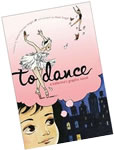 Autobiographical Connections
Autobiographical ConnectionsWhen writing autobiographies in the classroom, consider sequential art as an alternative to traditional approaches. Encouragestudents to incorporate a mixture of visuals including art from their childhood, photographs, scanned documents, and other graphic elements.
Read To Dance : A Ballerina's Graphic Novel by Siena Cherson Siegel, Mark Siegel (Illustrator) (Age 12+). This graphic novel focuses on the life of a young dancer.
Use The Magical Life of Long Tack Sam by Ann Marie Fleming as an example of an illustrated memoir. Based on a documentary, this work contains a wide variety of images from hand drawings to screen shots from videos. Examine a page from the book and notice how historical photos and other images are used. Also example a page with still images from the documentary.
Kampung Boy by Lat explores culture and change growing up in Southeast Asia during the 1950s.
The Wall: Growing up Behind the Curtain by Peter Sis focuses on growing up behind the iron curtain.
Pyongyang by Guy Delisle is a non-fiction account of the author's travels in North Korea. Involve students in writing accounts of their own experiences traveling.
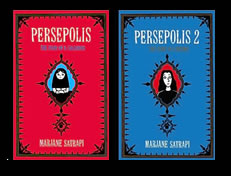


Read Persepolis: The Story of a Childhood and Persepolis 2: The Story of a Return by Marjane Satrapi. This memoir describes the life of a girl growing up in Iran during the Islamic Revolution.
Examine the Lesson and adapted WebQuest (Grades 11-12). Students will use the BioCube to outline their role and use Comic Life software to create a graphic journal. Finally, they share on a class wikispace.
Use graphic novels as a way to explore the lives of people throughout history. Read biographies from The Center for Cartoon Studies including Houdini: The Handcuff King by Jason Lutes & Nick Bertozzi, Satchel Paige: Striking Out Jim Crow by James Sturm and Rich Tommaso and Thoreau at Walden by John Porcellino.
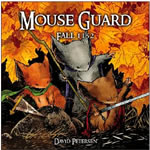 Fiction Connections
Fiction ConnectionsRead Mouse Guard by David Petersen (Middle School +). Use the Mouse Guard website to focus on characters, plot, and setting. Also, check out the author's blog. Keep your own blog as you think about the characters, plot, and setting for your graphic novel.
Many comics series are compiled into short story collections. In the case of Flight, the collection focuses on the theme of flight.
The Eternal Smile (3 short stories) by Gene Luen Yang and Derek Kirk Kim
Use Postcards: True Stories that Never Happened edited by Jason Rodrigez to jumpstart an illuminated project based on postcards. Ask young people to develop a story based on a postcard. Go to the book website to learn more about it and see examples from the book.
Read the award winning graphic novel: Pride of Bagdad by Brian K. Vaughan. Write your own graphic novel set in Baghdad. Write from the perspective of someone who experienced the bombing of Bagdad. Go to Bombs and Barbed Wire in Baghdad for an example.
Read Berlin, Book One: City of Stones by Jason Lutes and Berlin, Book Two: City of Smoke by Jason Lutes to explore life in the 1920s and 1930s before WWII.
Still I Rise: A Cartoon History of African Americans by Roland Owen Laird and Elihu Bey explores the struggles of African American through history.
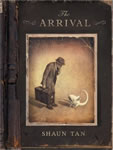 Read The Arrival by Shaun Tan. This wordless book focuses on the experiences of an immigrant. Many examples pages are at the author's website. You can also read an article by the author about his techniques. How well does it convey its message? What's real and what's fantasy? Compare images of the immigrant experience with the visuals in the story. Go to Scholastic for lots of ideas for immigration projects such as the oral history project.
Read The Arrival by Shaun Tan. This wordless book focuses on the experiences of an immigrant. Many examples pages are at the author's website. You can also read an article by the author about his techniques. How well does it convey its message? What's real and what's fantasy? Compare images of the immigrant experience with the visuals in the story. Go to Scholastic for lots of ideas for immigration projects such as the oral history project.
Invent a family based on immigrant photos of the time period. View a sample page created in Comic Life.
Other Resources
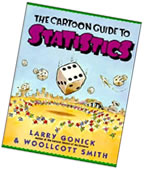 Content Area Connections
Content Area ConnectionsRead Cartoon Guide to Statistics by Larry Gonick and Woollcott Smith.
There are an increasing number of nonfiction comic books and graphic novels. From Chemistry to Statistics, you can find lots of examples to use as models. Get your students involved with writing a class book. Each student is in charge of writing a couple pages that can be used as a review of the topic. Consider an assignment that incorporates facts with a fictional account of a real event such as a natural disaster. Or, ask students to write a preparation plan for a natural disaster in the comic format. Rather than everyone doing the same thing, let students choose their earth science topic. Provide a few starter visuals. For instance, you might provide the DK Earth Science clipart page. Students could mix their own drawing with photographs and visuals.
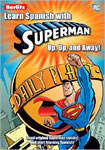 Use the Learn Spanish with Superman series from Berto get language learners involved with learning and writing in a foreign language.
Use the Learn Spanish with Superman series from Berto get language learners involved with learning and writing in a foreign language.
Many graphic novels have been adapted for the film format. For instance, Waltz with Bashir by Ari Folman and David Polonky has won a number of awards. Explore the connection between films and graphic novels.
 Many print comics begin life as web comics such as Shooting War, a political satire focusing on today's video bloggers, the news media, and issues of intellectual freedom.
Many print comics begin life as web comics such as Shooting War, a political satire focusing on today's video bloggers, the news media, and issues of intellectual freedom.
Illustrators often collaborate on projects focusing on particular themes. These often begin as websites and sometimes become print projects. For example, explore Terrible Yellow Eyes, a tribute to the work of Maurice Sendak and Where the Wild Things Are.
As you explore webcomics such as Children of the Sea by Daisuke Igarashi and others at Ikki from Viz Signature, examine the tools for online viewing.
Notice that comics such as Copper are created for the web format. The author, Kazu Kibuishi has created a wonderful tutorial showing the process of webcomic creation.
WebComics
WebComics Starters
Social Networks
Remember to look for illustrators rather than just authors. For example, Kazu Kibuishi created Daisy Kutter. Explore illustrator websites.
Look for series such as
Use Google Books Previews such as Philosophy for Beginners by Richard Osborne - Google Books Preview
Use News, Reviews and Recommendations, follow blogs and subscribe to RSS feeds
Use University Library Subject Guides
Read Journal Articles
Go to our Travel Pages for examples of Comic Life comics.
From sketches to sculptures, you can take photographs or scan original works of art. Examine Ode to a Cabin. It contains original photos and sketches.
Rather than writing a report on a famous person, write a graphic novel! Incorporate original drawings and primary source documents including photographs; birth, death, and marriage certificates; scanned tickets, newspaper clippings, and other materials. Work with the location historical society to explore famous local or state personalities. Go to Laura Wilson as an example.
Students read a graphic novel such as Laika by Nick Abadzis and create their own comic using Comic Life exploring the fact and fiction in the book.
Technologies